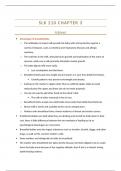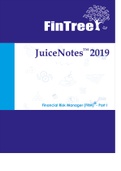Summary
Summary Chapter 3 SLK 210 notes- The Neonatal Phase and infancy
- Course
- Institution
- Book
This chapter summary includes a detailed review of the prescribed textbook of the University Of Pretoria in SLK 210. This summary includes all sections of the chapter that were in the demarcation for semester test 1 (2024).
[Show more]





